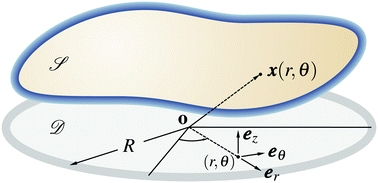Stability of discoidal high-density lipoprotein particles
Abstract
Motivated by experimental and numerical studies revealing that discoidal high-density lipoprotein (HDL) particles may adopt flat elliptical and nonplanar saddle-like configurations, it is hypothesized that these might represent stabilized configurations of initially unstable flat circular particles. A variational description is developed to explore the stability of a flat circular discoidal HDL particle. While the lipid bilayer is modeled as two-dimensional fluid film endowed with surface tension and bending elasticity, the apoA-I belt is modeled as one-dimensional inextensible twist-free chain endowed with bending elasticity. Stability is investigated using the second variation of the underlying energy functional. Various planar and nonplanar instability modes are predicted and corresponding nondimensional critical values of salient dimensionless parameters are obtained. The results predict that the first planar and nonplanar unstable modes occur due to in-plane elliptical and transverse saddle-like perturbations. Based on available data, detailed stability diagrams indicate the range of input parameters for which a flat circular discoidal HDL particle is linearly stable or unstable.


 Please wait while we load your content...
Please wait while we load your content...